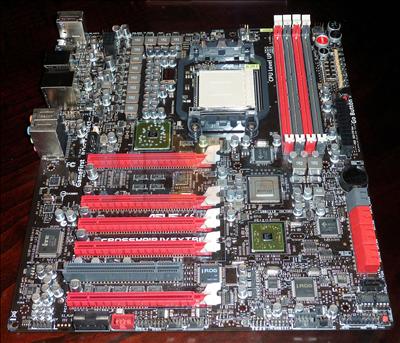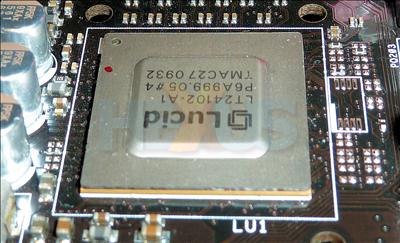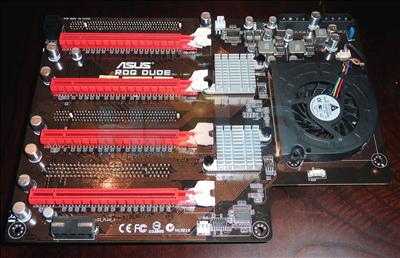What's new at ROG?
ASUS deliberately let slip a few beans regarding what it plans to show at next week's COMPUTEX trade show in Taipei, Taiwan.CROSSHAIR IV Extreme
In an anachronistic order, ASUS drew particular attention to its Republic of Gamers (ROG) line of hardware. Speaking of motherboards, HEXUS has already taken a detailed look at the AMD 890FX-based CROSSHAIR IV Formula and nabbed shots of the top-of-the-range Extreme, but this is the first time we've been able to get up close and personal with the best board in ASUS' AMD arsenal.
Designed for ultimate overclockability and packed to the gills, the standout feature is the Lucid Hydra chip that enables cross-company support for multi-GPU graphics - allowing you to pair a Radeon 5000-series card with a GeForce GTX 480, for example. So why the focus on it now when MSI has been doing it for a while?
ASUS reckons its implementation, in which the Lucid chip controls the board's second and fourth PCIe x16 slots, provides an extra few percent performance over running, say, two Radeon cards via traditional CrossFireX. The company is hard at work with Lucid to optimise drivers, representatives said, but we remain a little sceptical until we have one in our labs.
The Extreme is a well-laid-out board once you factor in the sheer number of components it houses. ASUS also throws in Bluetooth control over the ROG Connect feature, meaning you can overclock it via a mobile phone. The firm said it will demonstrate the Extreme being remotely overclocked by an Apple iPhone at COMPUTEX 2010.
The Dude
Meant to be a secret but outed by HEXUS last week, the ROG Xpander - codenamed Dude - is an add-on board that plugs into an Intel X58 Rampage III Extreme motherboard to provide 4-way SLI, courtesy of two nF200 bridging chips.
ASUS explained that one of the reasons why the two bridging chips weren't integrated on to the R3E lay with the chips introducing greater latencies and slightly lower performance than by running X58 alone. As an example, internal testing showed that a 3-way SLI setup on an X58 was faster when run via the native x16, x8, x8 than on a bridged x16, x16, x16 from nF200(s). This being the case, it only makes sense if you wish to run four cards in tandem. We reckon it's about a niche a product as ASUS has come up with. No comment on price or availability.












